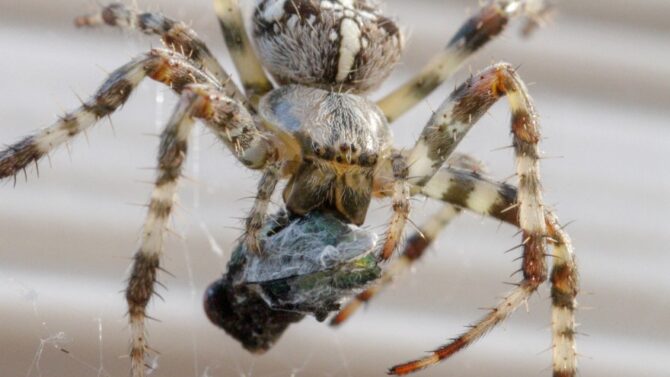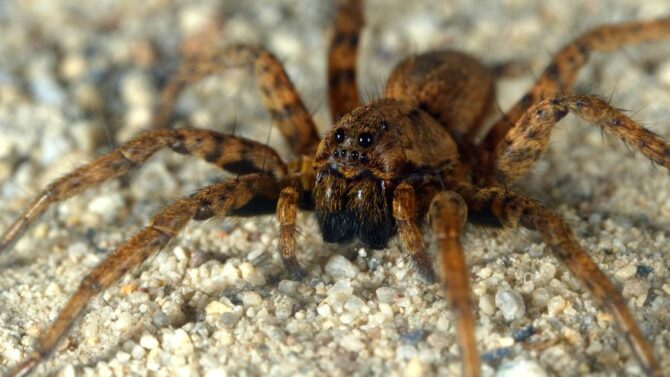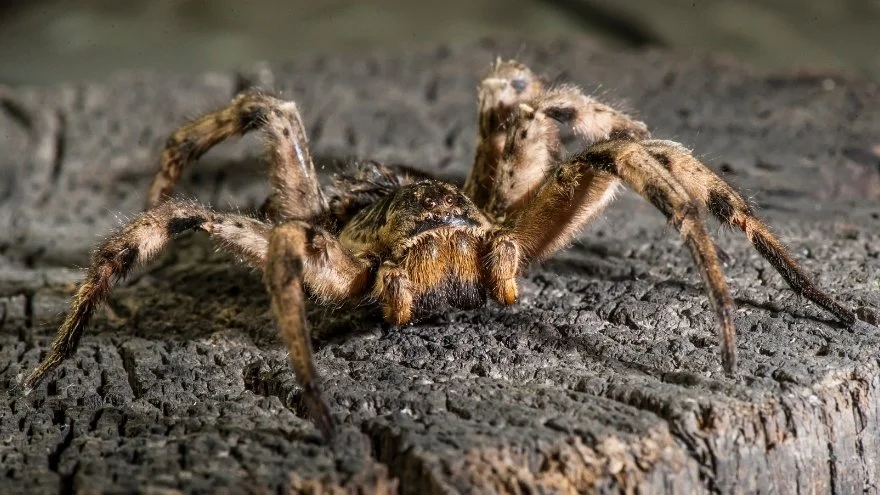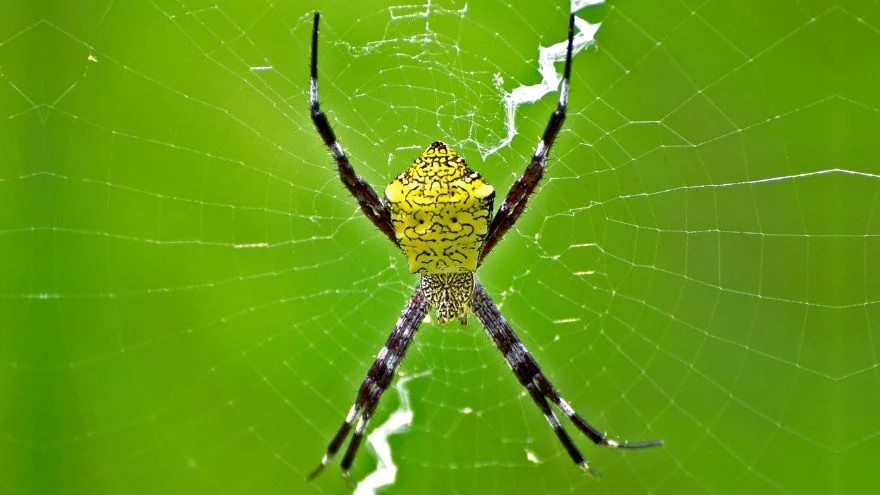Spiders are either fascinating or terrifying, depending on who you ask.
To the enthusiast, they are great gifts of nature. To the arachnophobe, they are nightmares. To insects, they are the world’s worst predators.
The last sentence brings us to the question of the spider’s diet. What do spiders eat, and where do they belong in the food chain?
Spiders feed a lot on insects, and they are the apex predators of these little creatures.
Their crusade on insects is beneficial as they help reduce the insect population, specifically harmful pests.
That said, spiders aren’t complete carnivores. They feed on plant matter too.
Here’s more on the subject.
What Do Spiders Eat?
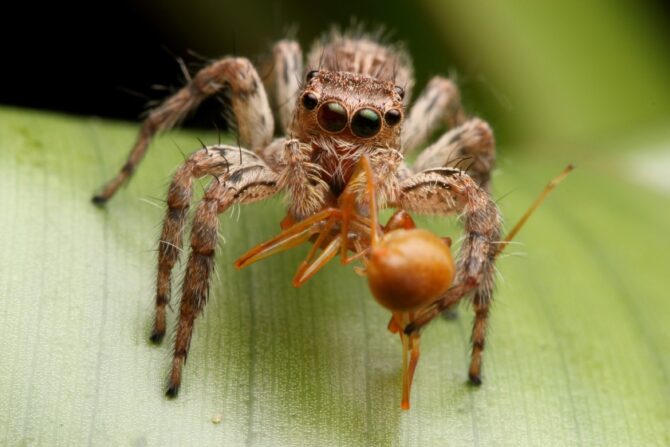
Spiders are enemies of insects and are apex predators of these creatures. Examples are cockroaches, flies, and moths.
Insects form a huge part of the spider’s diet, but the latter is not an insectivore.
It feeds on other animals like centipedes, worms, snails, and even other amphibians.
They also attack fellow spiders if resources are scarce or for sexual reasons.
Some surprising prey is birds, lizards, bats, and fish, though these are not common.
Though assumed to be carnivores, spiders can’t be classified as such, at least not across the board.
Some species feed on nectar, seeds, honeydew, and leaf material. Webbed species can sometimes eat their silk, and these animals are known to scavenge.
Similar to other molting animals, spiders can eat their shed skin. An example of a specie that does this is the tarantula.
Overall, spiders have a variety of diets, but they prioritize insects, amphibians, and some other invertebrates.
Spider Predators: What Eats Spiders?
Spiders may be apex predators of insects, but in the broader animal world, they fall prey to many other creatures.
These predators have an odd relationship with spiders as they are sometimes prey to the bigger arachnid members.
Predators of the spider include birds (like the sparrow and bluebirds…), lizards, centipedes, scorpions, and monkeys.
As we saw above, some of these animals also fall prey to spiders, hence the odd relationship.
Funnily enough, some insects, like the praying mantis, also eat spiders. Then we have their fellow spiders.
A species eaten by humans is the Goliath birdeater spider, that’s eaten like a snack.
Of course, it is not eaten with the hair intact, as that would simply cause damage.
The spider is said to taste like shrimp, especially when roasted.
Other spiders humans eat are the Thailand Black, different tarantulas, the golden orb-weaving spider, and the Thailand zebra leg tarantula.
Many spiders protect themselves from predators using venom, and only animals that can withstand the venom feeds on these spiders.
Others adopt multiple strategies like playing dead, camouflage, and mimicry.
How Do Spiders Hunt?

Spiders are often associated with webs, but not all spiders do this. We can classify spider-hunting methods into two categories:
- Web spinning
- Chasing
Web-spinning spiders set a trap using their webs, one that the unlucky prey will find hard to get loose from.
They then lie in wait until the prey gets trapped in the web. A spider’s web is made of silk, a strong proteinous material that small insects can’t break free from.
Web-spinning spiders tend to be small, so using webs provides them an avenue to capture prey that may be too large for them to chase down.
All web-spinning spiders don’t hunt the same way, though.
Fishing spiders make webs like diving bells and immediately snatch any animal that brushes at the bell.
Another category uses the web as a net and holds on to it or uses it to trap the prey like a fisherman’s tool. There are a lot of methods.
A common example of a chasing spider is the wolf spider. Wolf spiders don’t spin webs, so they hunt down their prey.
Sometimes they lay ambush like their web-spinning counterparts, then dive after the intended prey.
The wolf spider’s color fits its environment, which helps with camouflage.
Jumping spiders also don’t spin webs but have different methods of getting their prey.
They sometimes mimic ants to get into the nest and hunt down as many unsuspecting insects as they can.
This ant mimicry also serves to escape predators of their own.
Finally, there’s the crab spider, another example of a chasing species.
These hunt insects off flowers and can even take on the color of the insect, like a chameleon.
Do Spiders Eat Plants?
As we stated above, spiders are omnivores, though because they prefer meat, many spider enthusiasts think of them as carnivores.
Many species are known to eat plants and plant material like nectar and honeydew.
Why do spiders eat plants? Besides the nutrients they get, plants also give them a meal source when they need to rest from hunting or spinning webs.
Spider Diet: List of Foods Spiders Eat
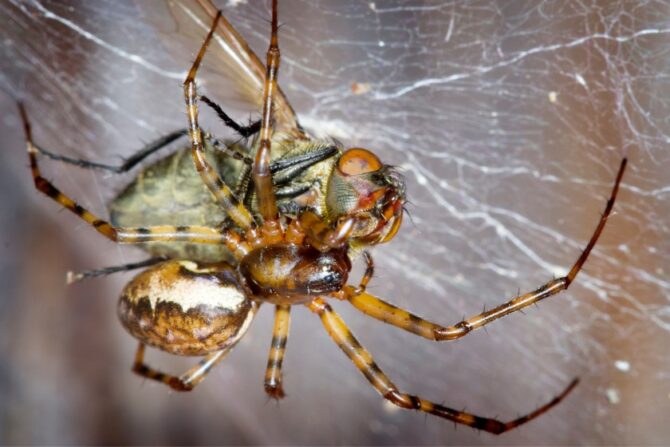
- Cockroaches
- Flies
- Moths
- Butterflies
- Snails
- Worms
- Small lizards
- Amphibians
- Centipedes
- Small fish
- Bats
- Small birds
- Other spiders
- Nectar
- Honeydew
- Ant larvae
Related Questions
What do spiders eat around the house?
A spider staying around the house has a diet similar to that of its outdoor counterpart, the only exception being that its contents with what it eats indoors. It goes after mosquitoes, flies, roaches, and clothes moths. Spiders serve as pest control.
What does a spider need to survive?
Spiders have three basic needs, whether as a pet or in the wild. These needs are shelter, food, and water. All these can be found in the habitat. This is why habitat loss affects the spider.
Do some spiders eat meat?
Spiders prefer live prey to other forms of meal, so they do eat meat. They can also eat carrion and plants.
Final Thoughts
Spiders are predominantly insect eaters, but they feed on other animals, plants, and even carrion.
Their diet is important for insect control as they regulate the population.
Spiders have different forms of hunting but are not impervious to other animals that also prey on them.
